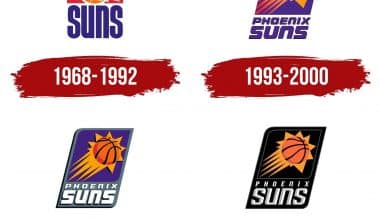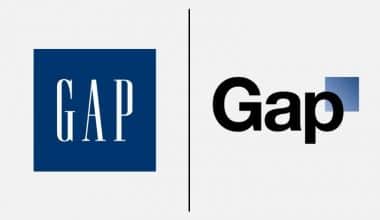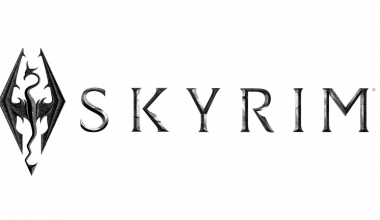One of the most well-known and easily recognizable logos in the computing industry is the one that bears the Intel brand name. Robert Noyce and Gordon Moore, who were the co-founders of the corporation, were the ones who came up with the concept of the “dropped-e” design, which was its earliest iteration. On the other hand, the Intel logo can be found on the most up-to-date chips, drivers, processors, and motherboards. The logo shows the technical excellence that the company’s details bring to users’ computers and laptops. In addition, they are the best manufacturers out there. We will be discussing the old Intel logo, the history of the Intel logo, and careers associated with the brand.
Overview
Intel is a multinational corporation headquartered in California, USA, that manufactures computer components such as processors, motherboards, graphics chips, drivers, flash memory, and other semiconductors.
Furthermore, it is the biggest company in the world and number 45 on the list of the 500 largest and most profitable companies in the United States (Fortune 500). (as of 2020). The company was established by semiconductor pioneers Gordon Moore and Robert Noyce. When it first opened its doors in 1968, it was in Mountain View, California.
- Started on July 18, 1968
- Founder: Robert Noyce and Gordon Moore.
- The location of the main office is in Santa Clara, California, in the United States.
The Intel Logo Meaning and History
Gordon E. Moore, a chemist and scientist famous for discovering Moore’s Law, and Robert Noyce formed the company Intel (a physicist who co-developed an integrated circuit). They decided to leave Fairchild Semiconductor to create their own company. In the end, it was Arthur Rock, who went on to become an investor and the board chairman, who was instrumental in raising the necessary funding. Andy Grove, a chemical engineer who served as CEO from 1980 to 1990, has been working with them from the start.
Furthermore, prior to 1981, the company’s primary focus was on manufacturing its own SRAM and DRAM. Then, after the advent of the first personal computers, entrepreneurs revised the fundamental assortment, emphasizing on microprocessor chips for PCs. This eventually became Intel’s primary focus.
Initially, the new organization was called NM Electronics—after the first letters of the names of its founders (Noyce, Moore), reflecting the core field of activity they represented. Later, the owners changed the name to Intel to show what their idea was about. The word “INTEGRATED ELectronics” is the main idea behind this brand name. The first letters of the words were taken out, making a name that is easy to remember, clear, and accurate.
To their dismay, however, they discovered that the Intelco hotel chain already had the trademark in question and would require a significant investment to obtain. As a result, the intel unique logo was developed from this shape. She went through a number of changes to adapt to the norms of the times. The intel logo comes in not one, not two, but three different styles.
The Intel Logo Evolution 1968- 2005
Robert Noyce and Gordon Moore, who later formed Intel, created the company’s iconic “dropped-e” logo. However, it was easy to read the sans-serif typeface in the blue logo. Since the letter “e” is below the letters “t” and “l,” it appears to have “fallen” off the line. From 1968 to 2005, its logo represented the company.
The Intel Inside logo, introduced in the early 1990s, was designed to work in tandem with the original. It was a component of the brand-new advertising campaign. The “Intel Inside” logo was developed by Intel to increase public awareness of the presence of Intel CPUs in various electronic devices such as the processors and the drivers. Intel’s 1991 logo reflected the company’s Intel Inside marketing initiative. Simultaneously, the Intel theme song was composed.
The Brand Evolution Continues From 2005- Till Date
The corporation made the decision to alter its corporate insignia at the end of 2005, and the new intel logo was unveiled on January 3, 2006. Furthermore, the FutureBrand team created it. It was based on the old intel logo and modified somewhat. As a first step, the team switched to Neo Sans Intel, a typeface in Monotype’s Neo Sans family. Then, in 2014, the Intel Clear version of the typeface was released, which was designed by Red Peak Branding and Dalton Maag.
A whole new graphical component, the so-called vortex, was also included. The word “Intel” was set in a contrasting color and framed by two stripes, the outer one wider than the inner. From the outside, the lines looked like they were inverted arches. The lowercase letter “e” stands out from the rest of the type because it has been raised. In addition, the left end of the crossbar was removed, and the I and l legs were rounded off when the “t” was created.
With the introduction of Tiger Lake, the present intel logo was introduced. It mixes parts from two different old logos and gives them a modern look. The Intel One design and font from 1968 were resurrected, with the exception of the “e,” which was preserved. In addition, they painted the name black, leaving the blue square adjacent to the letter I as the only remaining trace of the original color.
Character Styles and Intel Logo Colours
The intel logo makes use of a unique custom sans-serif typeface with a number of identifying characteristics. However, each of the letters I and “l” has a pointed tip and the letter I have a distinctive square on top rather than a dot. There is an issue with the “t” character’s bar length.
Today’s history on Intel logo features a light blue color scheme to represent the company’s influence in consumers’ imaginations. A person’s mind and conscience are more likely to be “spoken to” by the color blue than by the warmer tones of red or orange, which evoke feelings. It’s no wonder that it’s commonly used to promote cutting-edge IT and web-related products and services. Furthermore, the color blue has other meanings as well, including those of loyalty, wisdom, and calm. White, the other hue in the insignia, serves mostly as a neutral backdrop color. However, white, on the other hand, has its own symbolic significance, evoking ideas of chastity and dignity.
Why Did Intel Change Its Logo?
When most people think of Intel, they think of computer chips like drivers and processors. However, the company has shifted its focus in recent years to include the production of processors for use in data centers, AI-based algorithms, and other cutting-edge technologies like autonomous vehicles. Intel’s ultimate goal, as articulated by Walker, is to “light the fuse” for humanity’s greatest technological advances.
Furthermore, “The new Intel brand look and feel has meaning and was inspired by (Intel co-founder) Robert Noyce’s quote: ‘Don’t be encumbered by history. She urged me to “go off and achieve something fantastic.” Walker claims that there have been only two major brand shifts since the company was founded in 1969: one in 1969 and another in 2006.
Redesigning the old logo was another way Intel demonstrated its intention to address global issues including global warming, the digital divide, and the lack of diversity in the computing sector. “These motivating factors made evident that it was time for our external image to develop to better represent the firm we’ve become,” Walker continued.
What Is Intel’s Slogan?
This slogan is taken from Robert Noyce, co-founder of Intel, and his most famous saying: “Cast off the baggage of the past. Don’t just sit there, go out and change the world “.
The Interesting Facts About Intel
This year is the 50th anniversary of Intel Corp., one of Silicon Valley’s oldest and most important companies. However, since the beginning, Intel has been at the forefront of technological innovation. With their groundbreaking microprocessors, this company cleared the path for personal computers. Even if you aren’t aware of it, you may have used an Intel product in the past. Here are the top 7 interesting facts about intel.
#1. Intel Has its Own Museum
Intel has a museum at its headquarters in Santa Clara, California, that tells about the company’s history and accomplishments. Visit this location to learn about the history of this tech giant and view items from its past. The genesis of the museum we know today was Intel’s “Insider Program.” However, in 1992, they finally opened the doors to the general public.
Additionally, in 1999, the Intel Museum obtain an expansion and makeover. The museum currently occupies around 10,000 square feet. One of the best parts is that it doesn’t cost anything to check it out. Additionally, the Intel Museum attracts around 90,000 visitors annually.
#2. Intel Was Compelled to Acquire Patent Protection for Its Fundamental Processors
Intel paid Busicom, a Japanese calculator business that was apparently short on cash at the time, $60,000 to acquire the rights to its first core chip. The 4004 chip, released by Intel in 1971, was the company’s first commercially available microprocessor.
#3. Office Cubicles
Workplace cubicles are common in many industries and offices. However, Intel is widely believed to have been the first business to popularize the use of office cubicles. Intel, however, has altered the layout of its workplace and abandoned the cubicle system entirely as a result of the many criticisms leveled against them since 2007.
#4. Unicorns With Computers
The manufacturing of microprocessors requires a sterile setting. Even though cleanroom procedures have changed a lot since 1968, they were still far from perfect back then. The production spaces back then were always clean and in fantastic condition. There wasn’t any kind of uniform for the workers to follow.
By 1971, Intel had established a dress code with a few guidelines. Then the trend of wearing rabbit suits exploded onto the scene. In 1980, bunny suits were mandated for all employees. Employees in those semiconductor factories have been known to dress in bunny suits for as long as anyone can remember. The suits are still in the design phase, which makes sense given Intel’s commitment to constant improvement.
#5. Community Service Expansion
More than $80 million in grants, donations, and in-kind gifts were given to California institutions during the past five years by Intel and its philanthropic arm, the Intel Foundation. Additionally, staff members have volunteered close to 275,000 hours in the local area. The number of students enrolled in Oakland’s CS programs has surged by a factor of 14 thanks to the corporation, from 196 to 2,800.
#6. Initial Intel Financial Results
When Robert Noyce and Gordon Moore launched their company in 1968, it generated a meager $2,672 in sales that year. It was good and bad for a startup.
Nonetheless, Intel was able to turn a profit in the years that followed thanks to the backing of a select group of investors, the credibility of its founders, and the dedication of its workforce. In 1971, Intel went public and successfully raised $6.8 million.
#7. The Pentium Flaw
The Intel P5 Pentium microprocessors had an issue that caused unexpected behavior. These intel processors first appeared in the market in 1994. Expert mathematician Dr. Thomas Nicely uncovered this flaw in October 1994.
He reported the flaw to Intel after finding it. Intel still hasn’t responded to his inquiry. Therefore, on October 30th, 1994, he informed the world over the internet about the flaw. This became the buzz of the town immediately. The company issued a statement claiming the vulnerability was minimal.
Not only that, but they didn’t even give any sort of compensation. Intel originally planned to sell PCs with faulty CPUs until major clients like IBM said no.
Furthermore, they later extended an offer to swap out any affected chips for new ones. The net loss for Intel that year was $497,000,000 USD. To Intel’s benefit, the ‘Pentium Flaw incident significantly increased the company’s national profile.
What Font Does Intel Use?
The Intel company logo is set in the Neo Sans font. Neo Sans and Neo Tech, two futuristic designs developed by typography legend Sebastian Lester, were released in 2004. Then Intel made a unique one the next year for use with its branded logo and framed wordmark. Its use of clean, square writing is characteristic of future typefaces like Neo Sans.
Lester, however, insisted that the font family always remain classy and readable, and never gimmicky. Intel’s take on the logotype combines both square and round shapes for the letters, and some of the letterforms even feature tapered stems or arms.
Intel Processors
Intel processors offer the performance increase you need whether you’re creating a brand new PC or upgrading an older one. There’s an Intel Core processor that’ll fit your budget. Select from more affordable Intel Core i5 and i3 processors, ideal for general computing and casual gaming. Intel Core i7 and i9 processors offer the kind of lightning-fast performance that gamers and power users want.
Also, Intel’s processors aren’t slow, and even though newer, more powerful competitors are coming, they are still a tempting choice. The CPU, or processor, is the “brain” of a computer. It processes orders that are sent to it. A brain that works faster is better able to understand information and do hard things without much trouble.
From the most efficient laptops to the most powerful gaming desktops, Intel processors are everywhere. Intel’s CPUs are still interesting because of the variety available in the Intel Core family. Everybody can find an Intel processor that suits their needs. A surefire way to significantly increase your computer’s performance is to install or upgrade to a modern Intel CPU.
In the Intel Core lineup, you can choose between the i3, i5, i7, and i9 processor families. The rise in output is indicative of improved functionality and efficiency. The typical indicators of this are higher core clocks and larger numbers of cores. Comparatively, an Intel Core i7 has eight processing cores compared to six in an i5.
A computer with an Intel Core i3 processor would be ideal for simple chores like web browsing and word processing. Upper-tier customers, such as gamers, content makers, and power users, are interested in the superior performance offered by the Intel Core i7 and i9 processors.
Which Intel Processor Is Ideal for Playing Video Games?
The Intel Core i7 processor is the best gaming CPU money can buy. Until the release of the Intel Core i9, it was the pinnacle of performance for the company. Although the i9 is technically more powerful, the i7 CPU is widely considered to be the finest for gaming. An i7 has enough power for the newest and upcoming releases thanks to its up to 8 cores and 16 threads with hyper-threading (which splits one physical core into two virtual cores) and its startlingly rapid turbo boost for better performance.
Which Intel Processor Is Currently the Fastest?
The Intel Core i9 processor is the company’s crown jewel; it proudly displays Intel’s technical prowess. It’s their most sophisticated processor to date and can run any program, no matter how complicated, with ease. Even while running performance-intensive tasks in parallel, there is no noticeable lag. Any designer, engineer, or power user worth their salt knows the importance of having an i9 processor inside their computer.
Who Is Intel’s Biggest Customer?
Intel is the largest semiconductor chip maker in the world, and its top customers include Dell, Lenovo, and HP. Dell contributed 21% (17% in 2020 and 17% in 2019), Lenovo contributed 12% (13% in 2020 and 13% in 2019), and HP contributed 10% (1% in 2020 and 1% in 2019) of Intel’s net revenue in 2021.
As of December 25, 2021, 42% of accounts receivable for these three clients were insured, down from 43% on December 26, 2020. In addition, CCG and DCG operational sectors accounted for all income from these clients due to the sale of platforms and other components.
Is Intel a Chinese Brand?
No intel is not a Chinese brand. The Intel Corporation is a multinational corporation and technology company based in Santa Clara, California, in the United States of America.
What Is Intel Known For?
Intel is known for making microprocessors that are in the vast majority of computers around the world. Most electronic devices around the world use semiconductor chips, and the international technology corporation is the biggest maker of these chips in terms of sales.
Intel Drivers
The Intel Driver & Assistance Assistant ensures that your system is always running at peak performance by delivering personalized support and effortless updates for the vast majority of your Intel hardware.
What Is an Intel Graphic Driver?
A driver is a piece of software that is designed to work exclusively with one operating system (OS). The driver is the software component between the OS and the hardware component. Intel develops graphics drivers to enable communication between Windows* operating systems and specific Intel® graphics hardware.
Even though there are generic Intel Graphics Drivers, Intel recommends that you use the official drivers that came with your PC. Your computer manufacturer should offer specialized Intel Graphics Driver packages. Some Intel processors have built-in or dedicated graphics support, and these drivers from Intel make it work.
Is Intel or AMD Better?
To be more precise, Intel still has a marginal advantage over AMD in terms of overall failure rates, even after accounting for the high DOA rate for RKL CPUs. Here are a few differences between intel and AMD.
| Intel | AMD |
| In the entry-level price bracket, it is more affordable than AMD processors. | Costs less than Intel chips in the upper-performance range. |
| Ineffective compared to AMD. | More productive than Intel. |
| Clock Speed Boost increases the rate at which a device operates, and this process can generate heat (14 nm) | is typically less hot because of reduced lithography (TSMC 7nm is similar to Intel 10 nm) |
| This device’s clock speed has hit and is beyond 5 GHz. | The higher clock speed of up to 5.0 GHz is accompanied by an increase in thermal output. |
| The maximum number of sockets and cores it can use for symmetric multiprocessing is four. | It supports up to 8 sockets/128 cores of symmetric multiprocessing. |
| The Intel Core i3, i5, and i7 processors are the most popular. | Popular AMD processors include the Ryzen 3, Ryzen 5, Ryzen 7, Ryzen 9, and Threadripper. |
What Does the Name Intel Stand For?
Intel, short for “integrated electronics,” is a company based in the United States that produces semiconductors and other computer parts.
Intel Careers
Picking the intel job as one of the careers out there. Prepare to take on difficult problems and participate in the creation of game-changing technology. Intel provides its employees with the means, opportunities, and inspiration to make a difference in the world every day. We’ve helped build Silicon Valley and are now driving revolutionary new technologies that are helping solve some of humanity’s most pressing problems. It’s easy to collaborate with us on something significant and impactful.
Furthermore, get set to develop ground-breaking technology that will improve the lives of people everywhere. Data centers, AI, autonomous vehicles, memory, software, and so much more are all seeing breakthroughs.
Things to Consider When Looking for Employment at Intel
As found by a study conducted by CareerBuilder, “four in ten enterprises planned to add to their headcount,” in the first three months of the year. That means businesses will actively seek out talented new employees. The job search process at intel can be draining, especially if you’ve been at it for a while or are trying to switch careers.
#1. Get Yourself an Intel Employment Application
If you want to work for Intel, you need to submit your resume online using their proprietary software. Each page of their application tool is loaded with helpful instructions and explanations. But this will let you build and keep up-to-date information about yourself that will help you when you apply for jobs. During the pre-screening process, you will be asked a number of questions to see if your background and skills are a good fit for any of the jobs that are open.
Furthermore, all questions will be position-specific and tailored to your job title. If not, the questions will be very broad. After filling out your profile and hitting “Submit,” the system will show you a message confirming that Intel has received your information for potential employment. In addition, A confirmation email will be sent to you once your information has been received.
#2. Improve Your Online Reputation
Many people treat their social media profiles like informal online water coolers, sharing status updates and images without any thought or concern for others’ reactions.
However, having fun on social media is perfectly OK, as it is their intended purpose. No employer wants or expects you to erase a funny post from your social media account right before an interview. Nonetheless, being cognizant of this fact will go far.
#3. Interview Process
If your credentials and expertise are a good fit for Intel’s needs, you may hear from a representative of the company. They could do the interview over the phone or via video chat. Both technical and behavioral interviews are used to gauge your skills. Why does the candidate care so much about winning? Tell me about his or her previous successes. It’s better for the conversation to go both ways; have some questions ready to ask them.
Get in touch with our expert advisors to hear from current and former Intel employees about their experiences working for the company and making a living in their chosen fields. You can also count on them to offer advice on how to distinguish yourself from the competition.
#4. Successfully Accepting a Position at Intel and Starting Work There
In the event that you are offered a job at Intel after careers research, a representative will be in touch with you immediately to go through the offer details and schedule your start date. Additionally, you will receive written confirmation of all terms of the employment offer.
Who Is Intel’s Biggest Competitor?
Advanced Micro Devices, or AMD for short, is a competitor to Intel that makes more than simply microprocessors. Both firms specialize on producing components for computers, such as motherboards and servers. Within the x86 CPU market, AMD is Intel’s biggest competitor. Similar to Apple and Microsoft, Intel and AMD are in direct competition with one another.
What Country Owns Intel?
America. Silicon Valley is home to Intel Corporation, a major American corporation, and technology firm.
Conclusion
Intel has dedicated an entire website to explaining the changes to the old logo and showcasing how the new logos will appear on finished goods. The new proprietary font does look more up-to-date and more approachable. However, the reworked version of the “bong” song, which first appeared in an Intel advertisement broadcast in 1994, is completely unacceptable.
Similar Posts
- Best 10+ CREDIT CARD PROCESSING FOR SMALL BUSINESS NO MONTHLY FEE(
- 10+ WORST CREDIT CARD PROCESSING COMPANIES According to Reviews






